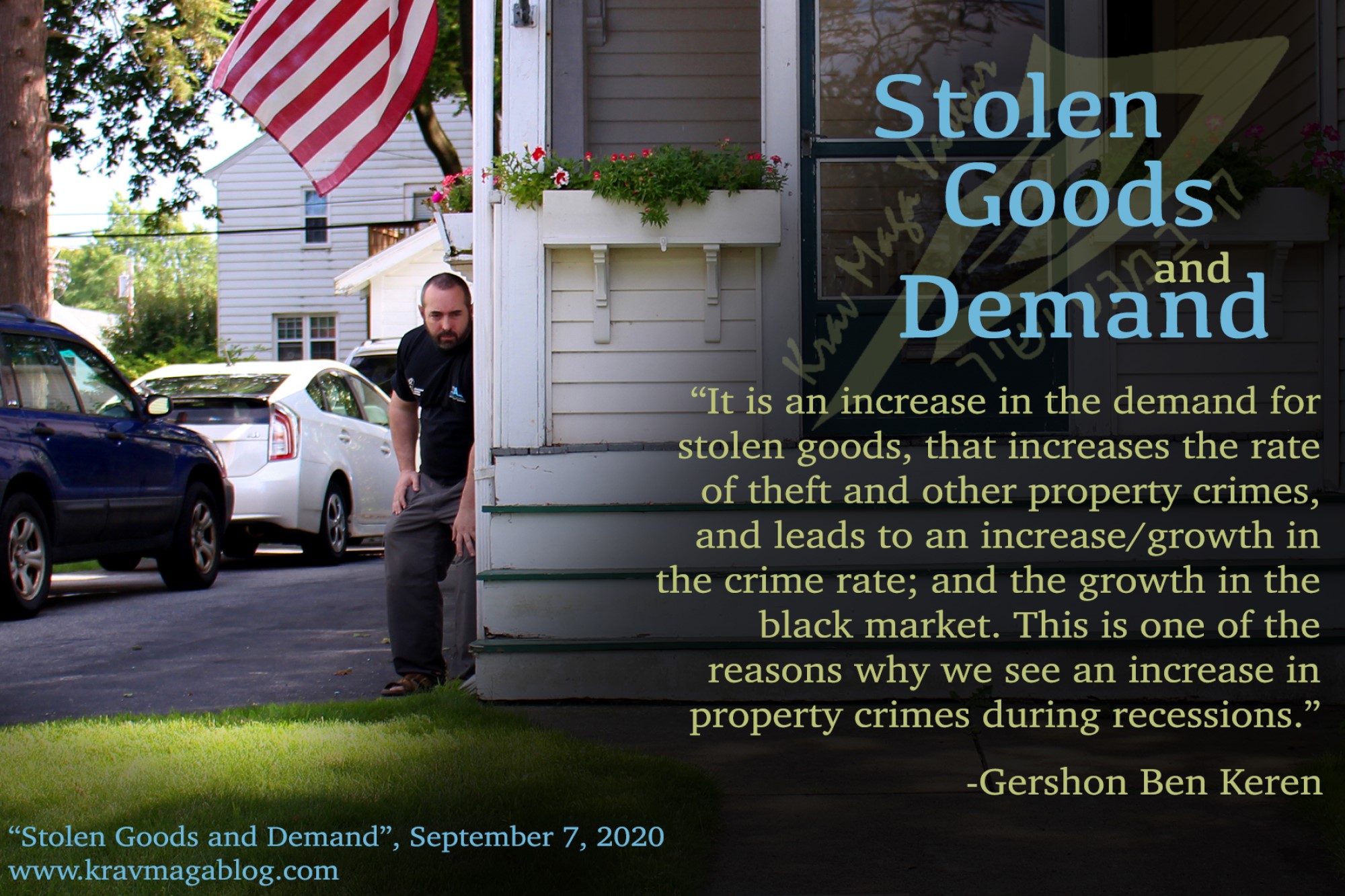Author: Gershon Ben Keren

Say’s Law states that supply creates its own demand i.e. when products and services are put out into the marketplace, demand will naturally and automatically be created for these things e.g. most mobile phone users don’t “demand” that their iPhone camera needs a higher resolution or are even aware of what may be possible, and instead wait for Apple to supply them with a new phone that is rich in these features. A consequence of this Law/Theory is that to increase economic growth, production – not demand - needs to increase. The underground/illegal economy works in the complete reverse; it is an increase in the demand for stolen goods, that increases the rate of theft and other property crimes, and leads to an increase/growth in the crime rate; and the growth in the black market. This is one of the reasons why we see an increase in property crimes during recessions. People who would not usually buy stolen goods, or goods whose origins they may be suspicious of, start to do so, due to economic hardships; this is especially true around the Christmas holiday season where there may be a social pressure to buy presents, etc. Having done some work in store security, the weeks leading up to Christmas sees a notable uptake in shoplifting. In this article, I want to take a look at property crimes at a higher level, looking at how stolen goods markets operate, and how different players fit into them, and the different roles they play.
Somebody engaged in property theft, such as a burglar, is generally involved in a three step process: firstly, they must steal/acquire property, secondly they must turn what they’ve stolen into cash (unless they were specifically stealing it for their own use/consumption), and then use that cash to pay for the products and services they require, which may be for drugs or to engage in other illegal activities; as well as to meet personal needs, such as paying rent, buying food etc. This third phase, although a seemingly obvious one, is actually important to understand, because it is often this that provides the motivation to commit a crime, or series of crimes, etc. Most of the time, criminals aren’t offending, and whilst an easy opportunity is unlikely to be passed up, it is at times when they need money that they start actively looking to offend e.g. it’s a few days until the rent is due, and they don’t have the money to pay their landlord etc. So, it is usually events such as these that start the process of offending. However, to turn the stolen goods into cash, they need to have a buyer(s). This could be a known fence, who they have worked with before, a secondhand shop owner who doesn’t ask too many questions (because they know their customers don’t either), or they have their own “market” that they can sell to - it was not uncommon in certain pubs I used to work at in the North of England, for known individuals to come in and quite openly sell stolen goods acquired through shoplifting; some of which had been stolen to order. Research has shown that those who steal goods rarely hold them for more than a few hours, wanting to be rid of any evidence that could convict them, and in need of the cash, which motivated them to offend in the first place.
There are many people who will consider themselves above buying stolen goods, and yet are happy to use pirated software, and use illegal download sites for music without batting an eyelid or considering that what they are doing is illegal. I remember many years ago attending a business convention where there were representatives from Microsoft, IBM, Oracle and other large software companies, who were trying to convince those who did business in the Far East not to use illegal copies of their software etc., but to pay the market rate instead. One business owner made the point that at the cost of licensing that these software companies charged, they didn’t have a legitimate market in these countries because most of the small/medium sized companies couldn’t afford to pay for them; and if they changed their licensing models to reflect this, then perhaps companies would start paying i.e. nobody wanted to be on the wrong side of the law. There tends to be a similar case, with those who buy stolen goods e.g. a person would like to have a 48-inch, state of the art, flat-screen TV, but not at the price Walmart and the other big box stores are charging. If Walmart dropped their price by 60%, then it would be preferable to buy legitimately. People also tend to have a funny disconnect in how they view those who commit the property crime, and those who trade in stolen goods. Whilst residential burglars are looked down upon and generally despised, those who fence/buy-and-sell their goods are often looked on as cunning entrepreneurs in the communities where they operate; as generous individuals who are serving the public by offering them goods at a price they can afford.
One of the great ironies regarding the buying of stolen goods, is that it creates a form of self-victimization e.g. a local shop may have to adjust its prices to accommodate a certain level of theft/shoplifting, meaning that the community as a whole absorbs the costs. Markets for stolen goods, tend to be close to where the goods are stolen from, so members of a local community are likely buying goods that have been stolen from a fellow community member – and if demand for such goods is high, it might be their house which is broken into next.